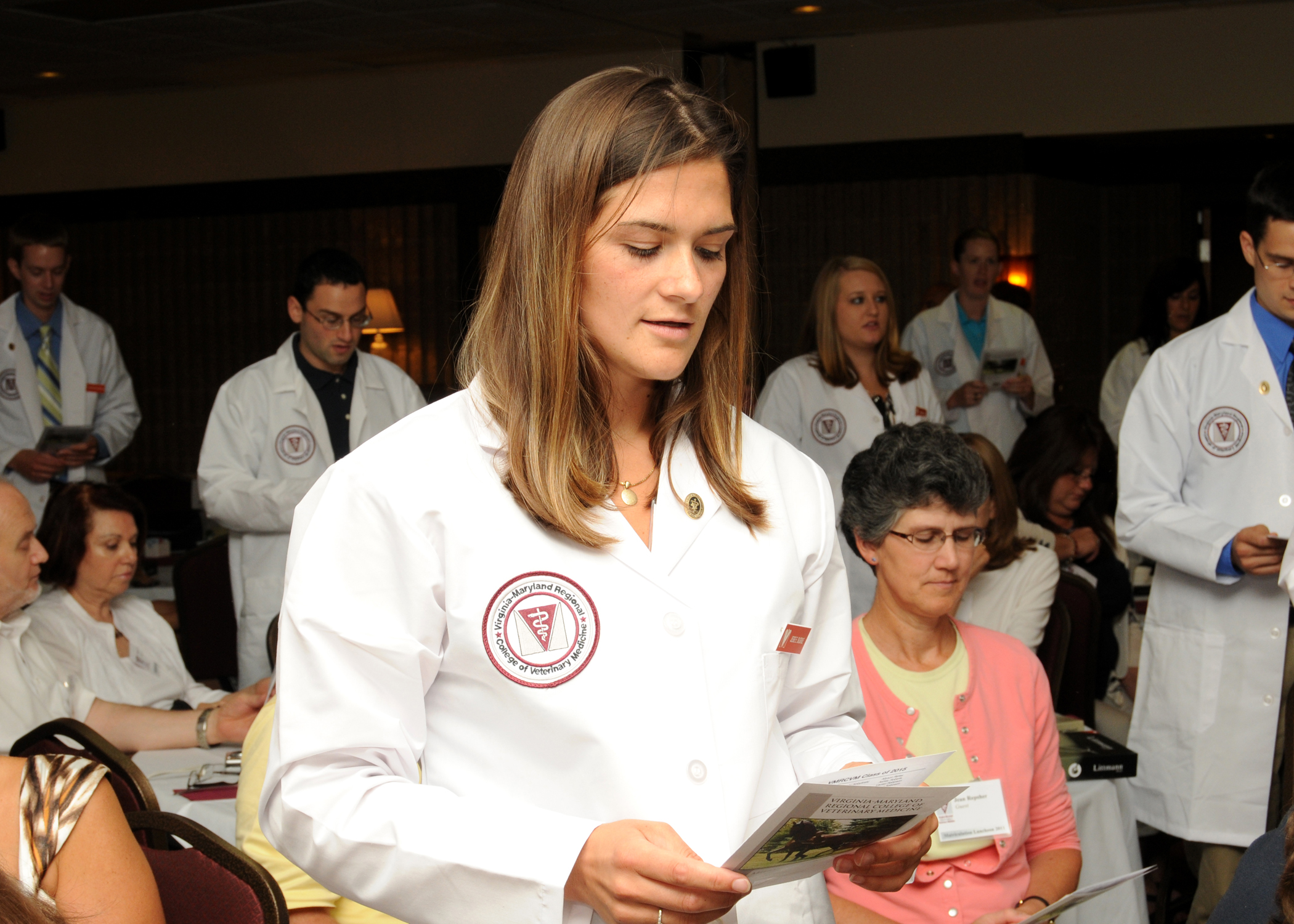Virginia-Maryland Regional College of Veterinary Medicine's Class of 2015 admitted in 'white coat' ceremony

Ninety-six students in the Virginia-Maryland Regional College of Veterinary Medicine at Virginia Tech’s Class of 2015 began their four-year training to become veterinarians following a week-long orientation and a “white coat” ceremony held here on Friday, Aug. 19.
Almost 300 family, friends, faculty, staff, and others attended the matriculation ceremony in which the college dean, Dr. Gerhardt Schurig, stressed how the first-year students are pursuing their dream of becoming veterinarians at a critical time in the history of science and medicine.
“Our profession has never been able to do so much for so many,” said Schurig, who outlined the profession’s important role in companion animal care, food animal veterinary medicine, and public health and infectious disease control. “At the same time, the world has never asked so much from veterinary medicine.”
The new students received a white laboratory coat and a stethoscope, personalized for the first time this year, thanks to a joint gift from the Virginia Veterinary Medical Association and the Maryland Veterinary Medical Association. In attendance were Dr. Claudia True, president of the Virginia Veterinary Medical Association; Dr. Don Henry, a representative from the Virginia Veterinary Medical Association; Dr. Tom Armitage, president of the Maryland Veterinary Medical Association; and Dr. Suzy Cooke, president of the District of Columbia Academy of Veterinary Medicine.
The ceremony also marked a special occasion for four veterinarians whose children began veterinary studies in their footsteps.
One of those was Dr. Peter Radue of Mt. Airy, Md., who issued a white laboratory coat to his son, Edward Radue of Mt. Airy, Md., a first-year Doctor of Veterinary Medicine student, at the ceremony. “I am very proud of my son,” he said. “I thought the ceremony was well done and know that the students are going to enjoy getting to know what it takes to become a veterinarian.”
Prior to the ceremony, the college welcomed first-year students with a week-long orientation designed to produce well-rounded and professional veterinary students. In addition to attending lectures to introduce them to the profession and the college, the students participated in an all-day ropes course at the Alta Mons campgrounds in Shawsville, Va., to improve their team building, leadership, self-confidence, and communication skills.
“The ropes course in particular has been useful, as have the presentations and team-building activities,” said Clara Winstead of Richmond, Va., a first-year Doctor of Veterinary Medicine student who described her decision to become a veterinarian as a “logical progression” from her work with animal rescue groups. “The orientation, in some ways, has been an icebreaker for us.”
Debora Weiss of Zurich, Switzerland, a first-year Doctor of Veterinary Medicine student, agreed that the week-long orientation helped her acclimate to the college and build relationships with her classmates. “I like that we are getting to know each other at different levels,” said Weiss, who completed a master in public health degree at George Washington University before entering the veterinary college. “These activities bring out different personality characteristics and show us how we can work together.”
The college welcomed the Class of 2015 after one of the most competitive application periods for the Doctor of Veterinary Medicine program in its history. It has already begun recruiting for the Class of 2016, which will have 120 students.
The college was among the first of the nation’s 28 colleges of veterinary medicine to have a white coat ceremony.







